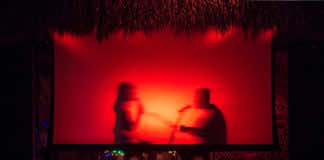I think a proper way to start off this blog would be with a recollection. Specifically, one of the first albums I remember obtaining, which, with little fanfare would kick off an almost fetishistic interest in writing about music, which began with essays in junior high school (that’s what they called middle school back in the ’80s) and continued into 10 years of writing reviews and artist profiles for weeklies and magazines.
So, to date myself some more, I will begin with the first rock record I ever recall asking my parents to buy for me: Billy Joel’s 1980 album Glass Houses. I seem to remember some kid in third or fourth grade bringing it to school. Some how he got away with playing the entire thing to the class during recess. The first time I heard this record in its entirety was underneath the shelter on the PE field of Coral Gables Elementary. I can’t remember if we were out there for PE or not, but I recall some adult setting up a portable turntable on some crates stacked on the smooth concrete floor of the shelter, which had columns painted in that desert sand color of most Coral Gables buildings.* To my rock ‘n’ roll virgin ears, the record was amazing. My mom was more into the crooners of the ’50s and ’60s and my dad was into big band, so a rock record from start to finish was pretty new and exciting to me.
I can’t remember where we wound up buying the record. However, I can remember my usual position back home, listening to the record and staring at the lyric sheet and memorizing the words. Just looking at the lyric sheet now, I can’t help but recall the old days when I had time to study these things, just laying belly down on the shag carpet of our three-bedroom Coral Gables home, reading along, as the songs passed by. The printed, hand-written lyrics alone hold a certain nostalgia, since I haven’t seen them in decades, until now (as I write, I’m listening to a copy I picked up at a thrift store recently for less than 50 cents, and quite a clean copy at that!).
Then there’s the music. It kicks off with the sounds of shattering glass, the tone of which I remember well, since I used to play it over and over again during that era. Then “You May be Right” kicks off. The lyrics all come back to me now. “Remember how I found you there/Alone in your electric chair/I told you dirty jokes until you smiled.” Even now, it doesn’t make much sense to me, but still has the dangerous swagger. Upon a more mature listening, I now know what Billy Joel means, when he sings “I walked through Bedford Stuy alone.” I had yet to see Do the Right Thing. Well, that movie had yet to be produced.
On “Sometimes a Fantasy” there is some heavy breathing joke in it that went over my head, but it’s the chorus that always stuck to me with it’s soaring keyboard/guitar line, a sort of unison hook that was typical of late 70s rock, not to mention the song’s fade out during the crazed guitar solo.
With its Spanish balladeer style, “Don’t Ask Me why” was real pleasant sounding after the swagger of “Sometimes a Fantasy” followed by the extra swagger of “It’s Still Rock and Roll to Me.” I remember my mom liked it, but “It’s Still Rock and Roll to Me” was the cooler track. This song, to me, was defined by the line “Are you gonna cruise to the Miracle Mile” because, being a kid growing up in Coral Gables, I was quite familiar with the stretch of Coral Way known as “Miracle Mile,” with its many shops, some of which are long gone, like the Woolworth where I picked up my Star Wars action figures at the time.
“All For Leyna” features another sticky chorus. Again a mature lyrical subject matter that never made sense to me then, but I loved how the song changed from its staccato-delivered verses to the dreaming croon of the chorus, with its angry, piano key pounding. Not to mention it’s high-pitched squeaky synthesizer solo toward the end, whose dated quality was de rigueur during late ’70s radio rock. I remember this was also the song where the record would skip due to the rough handling of my 10-year-old hands.
The albums’ songs occasionally open with samples. “Sleeping With the Television On” opens with stuff we took for granted back in the day. The sound of our national anthem through some distant TV speakers and the beeeep of the sign off with the sound of static, must be totally alien to the younger generation of music listeners. Not to mention Joel sings about the “white noise,” which is now only better known as a setting on those relaxation noisemakers sold at bath stores. The song also has another over-the-top catchy chorus: “You’re eyes are saying talk to me, talk to me…”
Then there’s another mellow song: “C’etait Toi (You Were the One),” with its pretty, soft guitar strum and the soft piano the singing that turns to French. The first French song I was able to sing along to (tuete la soooo, ooh, lol, that’s “Tu étais la seule” on the lyric sheet).
“Close to the Borderline,” like “I Don’t Want to be Alone Anymore” before it, never stuck to me. It sounded bland compared to the other tracks on Glass Houses, like the rest of the popular early ’70s radio hits I used to hear on the radio before this record, full of some genuinely great, cool ideas and some dynamic soundcraft. Speaking of, the album certainly ends strong with “Through the Long Night,” which I now just realized sounds like a Beatles song. It opens with that melancholy, solitary trumpet and the simple low-end runs on the piano. It’s quite beautiful in it’s sadness. Then that hyper harmonized chorus kicks in, sounding even more Beatlesque. A very nice closer.
Sadly, I think this record wound up thrown out in the garbage after the divorce of my parents, and when he had to move from place to place.
Upon re-listening to it now, I was impressed with the depth of the vinyl, the clarity of Joel’s voice, despite the occasional pops of the vinyl. Some of the denser tracks sounded a bit noisy and trebly, but that’s probably the limits of my system.
So there it is, totally irrelevant to what’s coming out in the music world right now, but a bit more personal than the usual music writing I have done, which I hope this blog will feature more of.
*To this day the city is known for it’s strict code that dictated a uniform color code (mostly light browns and yellows to soft maroons) for all homes and buildings within the city limits. Anyway, that’s the color palette of this scene.











Great first post Hans!
I really like how personal this post is. I throughout enjoyed reading this!
Great job, consider me subscribed!
Send me an email at weallwantsomeone@gmail.com sometime, lets chat!
I don’t really like Billy Joel, but you actually make this sound appealing. Maybe I’ll give it a go sometime…